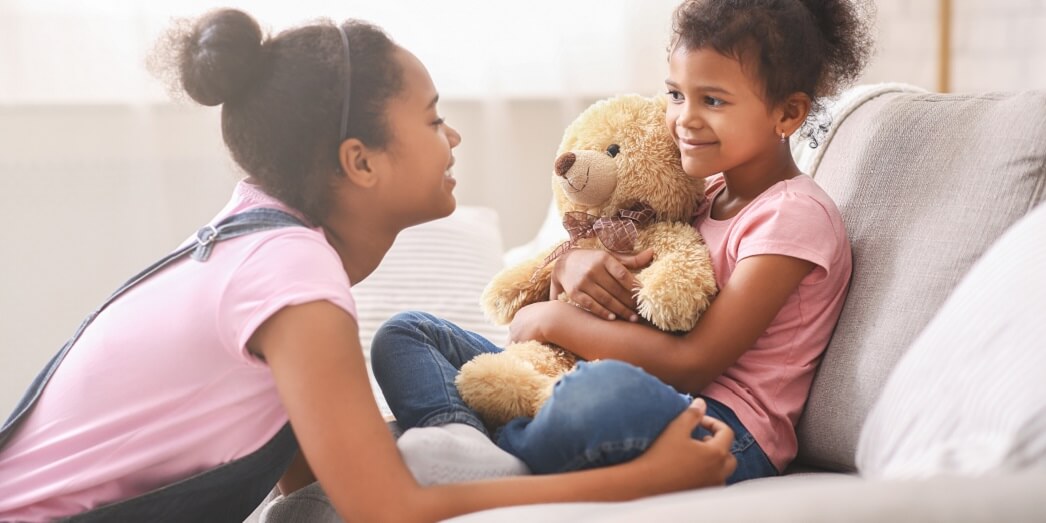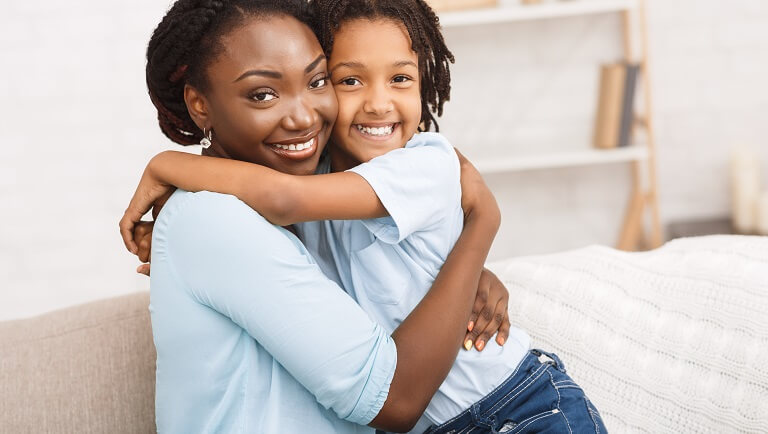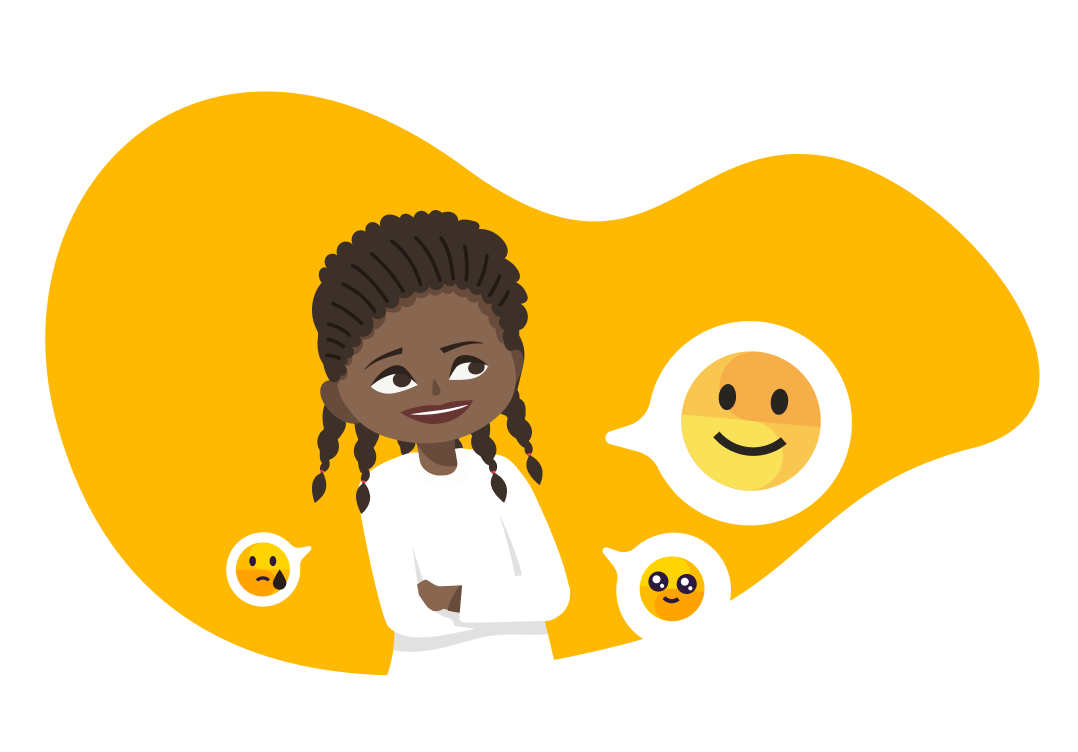
How to teach a child about personal space
Personal space is one of the trickiest topics, especially when it matters to children. We will tell you how to raise a child’s body awareness step by step, beginning from explaining the term to children and ending practical recommendations.
What is a personal space bubble?
Personal space is an area around a person that other people should not enter without permission. The need for personal space is an innate thing like an immunity. However, social skills of establishing personal space we generally gain in childhood and develop throughout life. The success of setting personal boundaries depends on a level of skills and body awareness.
Personal space is a relatively new term. But the need for a safe and comfortable zone is ancient. Michael Graziano, a neuroscientist and an author of the book The Spaces Between Us, names personal space a “buffer zone around the body” and our intangible “second skin”, which is hardwired into our DNA. Graziano assumes that when a person can’t establish a necessary buffer zone, he will face devastating consequences.
Psychologists tell the same — indeed, the brain computes a buffer zone, which is very flexible. The computing of the buffer zone is largely unconscious. Space bubbles can change in size, depending on the context. All of our social interactions are built on the skill to establish and recognize intangible space bubbles.
The functions of the space bubble are varied. One of the basic ones is the protection of actual physical threats. In the 1950-s the scientists found out that animals have personal space for protection from predators. In ordinary life, “second skin” helps us stay safe when the brain adjusts our moving. For example, the brain let us walk through the doorway and not bash shoulder on it.
Besides, living in a society, we often need to build borders for protecting our mental health from psychological attacks. That’s why the term personal space bubble consists of tangible and intangible aspects. Respecting the individual space bubble means not only not to come too close but also to accept a person’s opinion and desire for privacy.
Zones of personal space
It is worth mentioning that zones of personal space depend upon various factors, including culture. That’s why visiting other countries is essential to follow social rules accepted by the people. There are four main zones accepted in the USA:
- Intimate zone (0-18 inches) is a space for hugging and whispering;
- Personal space (18 inches to four feet) is a zone for relationships with relatives and friends;
- Social space (4-10 inches) is for contacts between acquaintances;
- Public space (10 feet and more) is for public speaking.
Why is it important to teach kids about personal space?
After a baby’s birth during the first years, a kid has no idea about personal space. One of his main aims is to know about other people and the world through touching, smelling, and tasting objects. There is nothing weird about that toddler touching your face, slobbering on your shirt, or crawling on your laps.

But year by year, a kid becomes more separate and independent. It is a good time to teach a kid about a personal space bubble. Otherwise, there is a high probability that a child won’t understand how to establish a good interpersonal relationship in the future. The lack of knowledge and skills about personal space bubble vividly occurs in primary school when a kid:
- hugging peers when they don’t want to hug;
- sitting and standing too close to classmates;
- not understanding body language;
- bumping into peers;
- having difficulties in making friends.
How to teach a child about personal space
To answer this question correctly, let’s refer to the personal space and body awareness survey, in which 260 teachers, parents, and pediatric therapists took part. They gave their point of view on what to do when a child has difficulty with personal space:
- 25% of participants chose body awareness exercises and activities as the most effective;
- 24% of respondents pointed at physical cues (for example, holding a hula hoop to understand what is personal space bubble is);
- 18,8% selected activities developing coordination and body awareness;
- 11,9% indicated visual cues;
- 5,8% chose alternative seating;
- 1,9% indicated sensory diet;
- 1,9% chose other activities;
- 1,2% indicated video modeling.
Many of them agreed that a combination of methods would have a considerable effect. It is significant respecting own and other’s space bubble and work should go in different places:
- At home — when a child learns and respects his parent’s borders, gains awareness of intimate and personal zones.
- At kindergarten — when a kid learns extremely important social cues regarding interaction with peers.
- At school — when a student has an opportunity to practice social cues with many different people — peers, students of different ages, and less known adults. Here he gains skills in establishing social and public zones.
- Everywhere — the more a kid practices, the more experience he has. A kid should understand that every person has equal rights and deserves to respect his personal space.
Three steps in teaching kids about personal space bubble
1. Clear understanding
A clear understanding of personal space is the first step of successfully using and respecting personal boundaries. That’s why it is essential to explain a kid:
- A definition of a personal space bubble. It is good to illustrate it through certain tangible examples, like using a hula hoop for highlighting personal space.
- Explaining when and why a person can interfere into other personal space bubbles.
- Helping a kid feel his boundaries.
- Learning body language and etiquette.
2. Self-advocacy
Teach kids to protect their boundaries when someone intrudes on their zone. Depending on the situation, a child can: back up, walk away, ask a person to back up or stop touching, ask an adult for help.
3. Gaining explicit rules and practicing
Practice shows it is difficult to give a thorough idea of the personal zone to a kid. Some children need explicit rules, examples, and practice. Below we’ve collected activities that will make education thrilling.
Useful activities to teach a kid personal space

Physical cues
Let a kid do activities at home staying on a square carpet. Explain to him that carpet square allows a personal space. This exercise will help a kid raise body awareness, and he also began understanding which boundaries he should advocate.
Specific spots at home
Let a child have some particular spots that are just for him. Ask other family members to respect a kid’s place. If a child appreciates his own space, he will treat others with more respect.
Visualization
Hang the hula hoop over your child’s shoulders and his friends. Then let them play with the hoops on. This exercise will help remind kids of their and others’ personal space and stop crossing it. After this activity, a kid begins better understanding how close it is appropriate (or not appropriate) to move to others.
Raising Awareness
Talk with a child aspect of personal space and give him a good example — display respect to others’ space and advocate your own. It is good to discuss some controversial topics, for example, reading the personal diary of SMS.
Learning body language
Emotion is a basic signal of permission or ban on actions. Let your child express his feelings safely and comfortably. One of the means of advocacy for the personal space bubble is to show it verbally and non-verbally. A printed sheet of emoticons (like in WhatsApp) will let a kid scan another person’s emotions and understand whether his actions are encouraged or not. Teach a kid social cues pointing to interference in personal space like these: expression of face, movement, avoiding eye contact, or starting to look elsewhere.
Personal space language
Teach kids to tell others their feelings concerning the personal space bubble. Individual space language can include the following phrases: “You’re too far away right now”; “You’re standing too close to me”; “I need more space”.
Instead of conclusion
Today we can hear phrases “respect my boundaries” and “don’t invade my personal space” multiple times. It proves that many people come across difficulties in making healthy interpersonal relationships. Probably, the technical breakthroughs only complicate the situation. Thus, Simon Worral in the article for National Geographic, raises the question of how cyberspace will affect our space mechanism. The author assumes that living in cyberspace will cause changes in physical and personal interactions and become one of the reasons for increasing difficulties with social interactions. That’s why the demand for establishing personal space will only rise in the following decades.

new engaging articles



